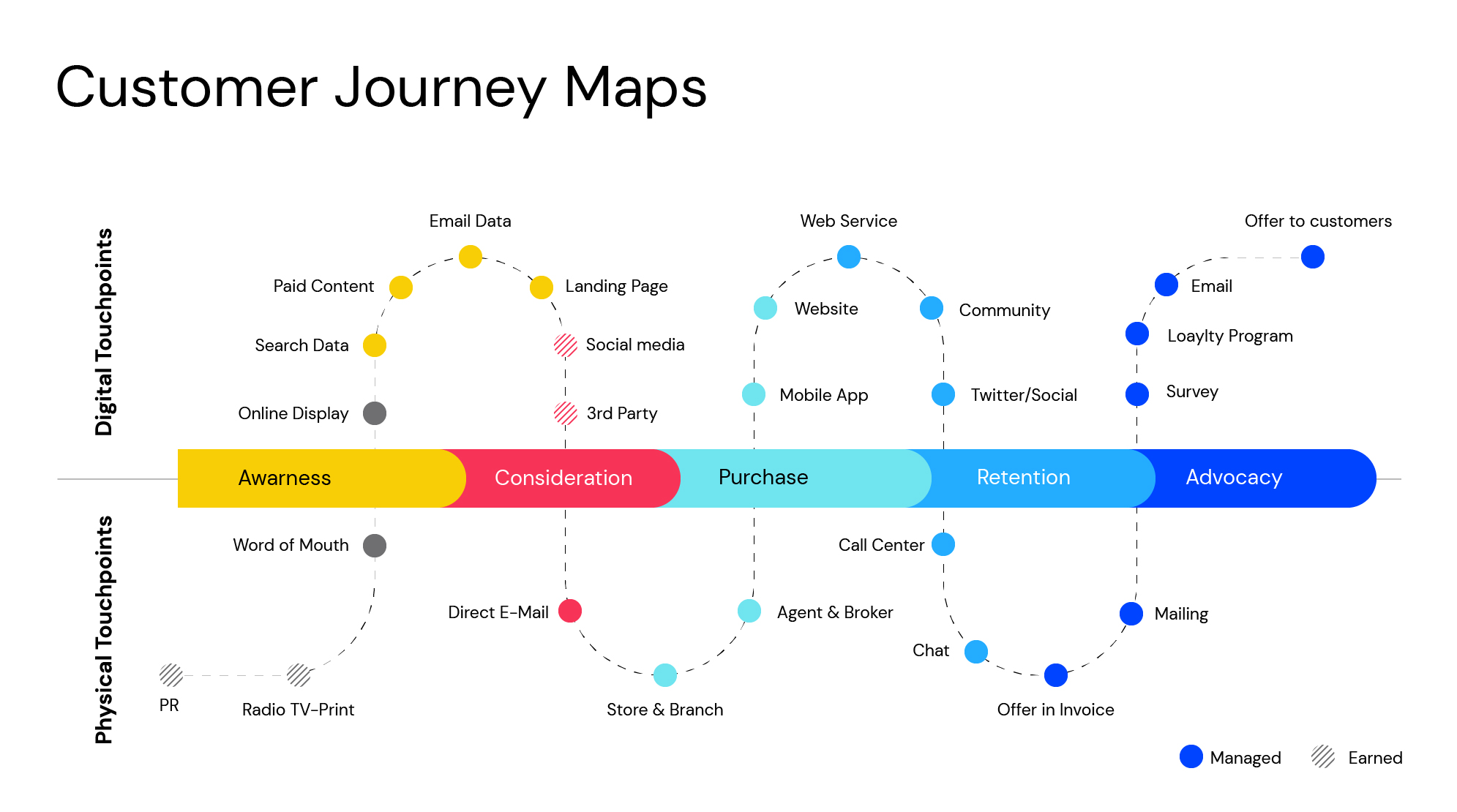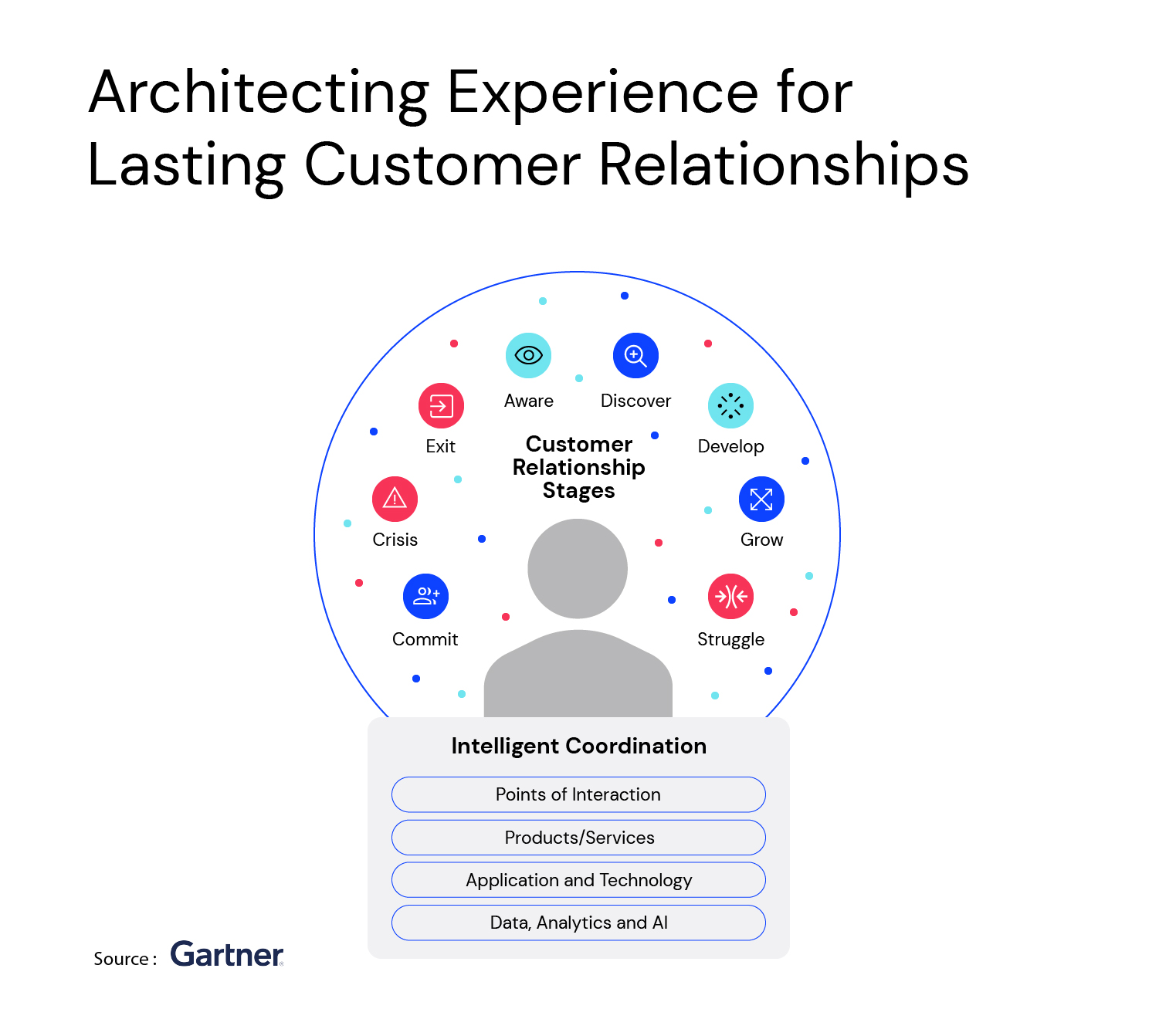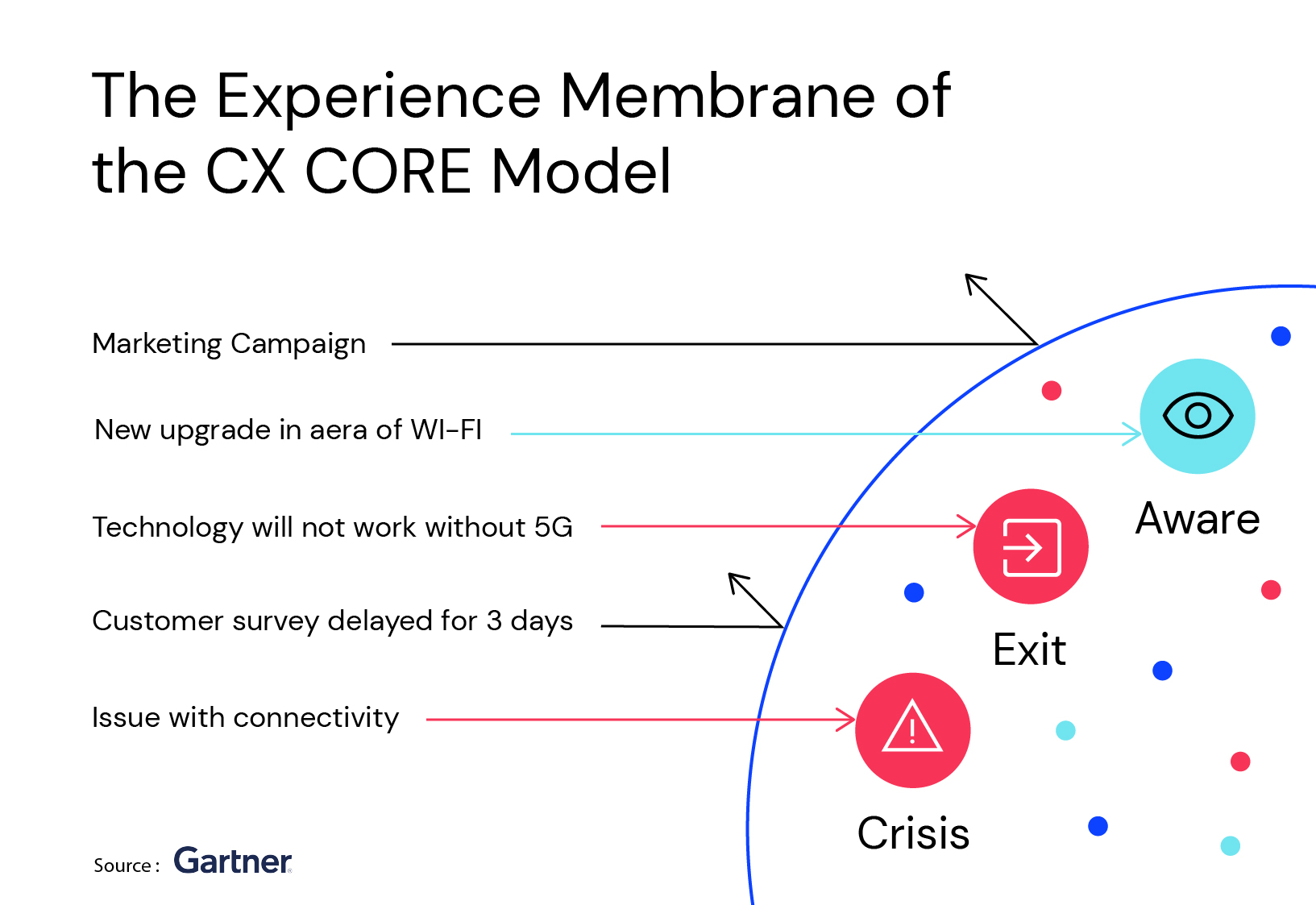
Customer Experience: Always a Linear Process?
“People don’t buy goods and services. They buy relationships, stories, and magic.” – Seth Godin
This quote highlights a well-known principle in sales and marketing today: offering a quality product or service is no longer enough to create a competitive advantage. Companies must adopt a broader vision of their value proposition to offer a complete experience to their customers. This includes delivery, brand interaction, and customer service, among others.
This concept, commonly referred to as “CX strategy” in the industry, permeates many technological projects such as the implementation of a CRM, an application, or a mobile or web interface. Our experts are thus called upon to conduct workshops and analyses on the experience our clients want to offer their own customers. It is essential to understand the needs, challenges, and desired outcomes of customers through the different phases and touchpoints with the company to build a coherent solution architecture.
The Linear Approach
Since the democratization of the concept at the turn of the 2000s, numerous work canvases have emerged to structure analyses and develop CX strategies. The most used by industry experts is undoubtedly the customer journey. A majority of these canvases have one thing in common: they are linear. The customer enters one side of a sales funnel, passes through a sequence of different touchpoints in their interactions with the organization, and exits the other side with not only a product or service but also the feeling of having experienced something worthy of a good review on Google.
A work canvas looks like this:

The CX CORE Approach
Following the disruptions of recent years, such as the pandemic, the democratization of artificial intelligence, and the acceleration of digital transformation, experts are questioning: are these tools still relevant for discussing customer experience? The answer: no.
The linear model, although it considers the customer, is not customer-centered but rather sales-process-centered. Moreover, the touchpoints and interactions between a company and a customer are increasingly fragmented, diversified, and discontinuous, making the customer journey exercise difficult to accomplish. In this regard, Gartner experts propose a new model: the CX CORE.

Beyond its resemblance to a snow globe, our experts observe that this model brings an interesting paradigm and cultural shift. It is built around four key concepts:
1. The Customer at the Center of the Model
The golden rule of Design Thinking is embraced in this model: the customer must be at the center of all CX reflections. All functions of the organization must collaborate to create customer-centered experiences by using empathy and soliciting more feedback.
2. A Solid Technological Foundation
To deliver an enriched experience that creates a competitive advantage, the company must implement the right tools and processes, collect data, adapt its products and services, and train its employees. Without this, the model lacks the necessary foundations to function.
3. Non-Linear Interaction Points
Rather than seeing interactions between the company and its customer as a tunnel where one interaction leads to another, this model invites the company to evaluate each interaction individually. This allows recognizing that each customer will have a unique experience by combining different interactions without complicating the CX strategy.
4. Controlled Communications
Each customer does not need to receive all the communications from the company. Only the communications relevant to their experience should be sent. The membrane surrounding the customer in this model reflects this layer of protection. Some communications should bounce off the membrane, while others should pass through, as shown in the diagram below.

Where to Start?
Simply being aware of this model, which focuses on the unique customer experience, technological foundation, non-linearity of interactions, and communication management, is a good starting point. To go further, here are some key steps:
1. Evaluate the Current State of Customer Experience (CX)
Conduct a comprehensive assessment of the company’s current CX capabilities. This includes analyzing the strengths and weaknesses in processes, technologies, and CX management strategies.
2. Define a Clear Vision and Objectives for CX
Define a strategic vision for CX, aligned with overall business goals. This vision should focus on customer empathy and the creation of lasting relationships.
3. Create a Cross-Functional CX Team
Forming a team composed of technical, sales, and marketing resources is essential to coordinate efforts and ensure that every interaction with the customer aligns with the overall CX strategy.
4. Use Real-Time Data and Analytics
The CX CORE model relies on using real-time contextual data to understand and respond to customer needs. It is necessary to implement a tool like a CRM, connect it to different interfaces, and train employees to use it.
5. Choose the Right Service Partner
Collaborate with an external service provider with proven expertise in technology. The company must conduct a rigorous selection process to identify partners capable of merging technological capabilities with the company’s CX strategy.
And don’t forget: start small. Improving customer experience is an iterative process in which your organization must gain maturity.





















